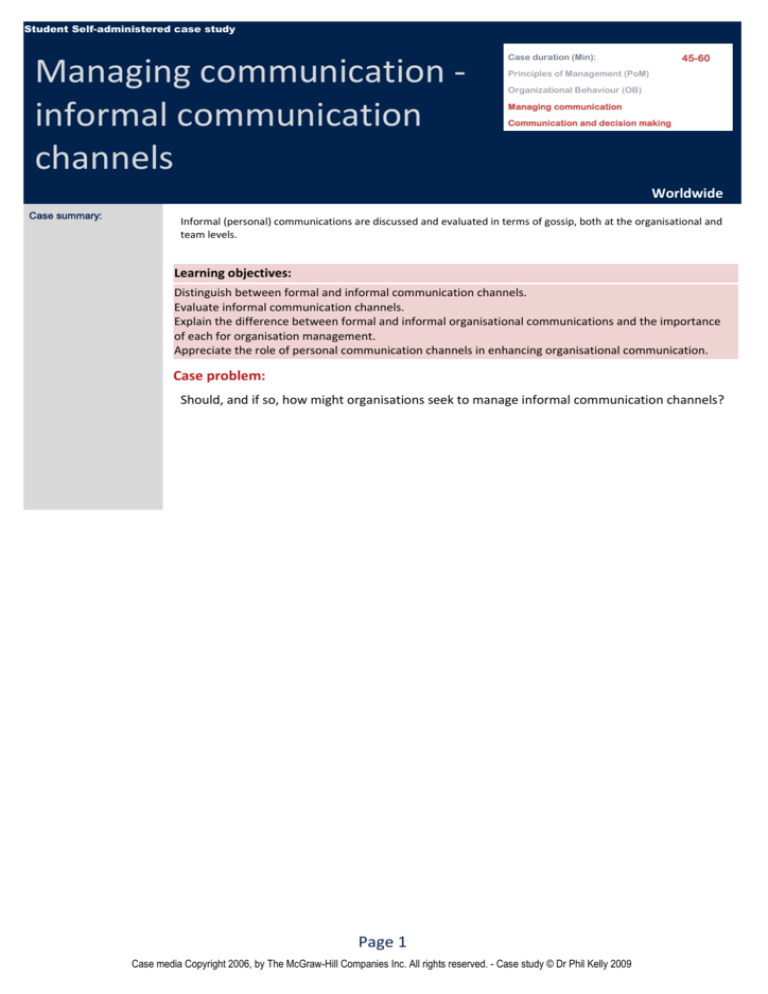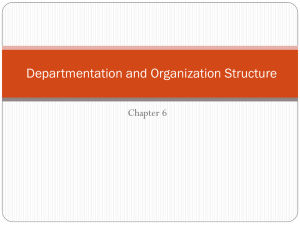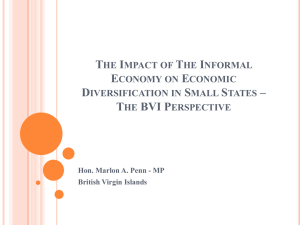
Student Self-administered case study
Managing communication ‐ informal communication channels
45-60
Case duration (Min):
Principles of Management (PoM)
Organizational Behaviour (OB)
Managing communication
Communication and decision making
Worldwide
Case summary:
Informal (personal) communications are discussed and evaluated in terms of gossip, both at the organisational and team levels.
Learning objectives:
Distinguish between formal and informal communication channels.
Evaluate informal communication channels.
Explain the difference between formal and informal organisational communications and the importance of each for organisation management.
Appreciate the role of personal communication channels in enhancing organisational communication.
Case problem:
Should, and if so, how might organisations seek to manage informal communication channels?
Page 1
Case media Copyright 2006, by The McGraw-Hill Companies Inc. All rights reserved. - Case study © Dr Phil Kelly 2009
First, if you are taking a taught management course then consult with your tutor and ensure that the case has not been scheduled into a teaching class or
tutorial. If it has not:
1. Play/ read the media associated with the case. You may need to access the Internet and enter a URL to locate any video clips.
2. Attempt the Case study questions.
Consider attempting the case study as a group exercise; you could form a study group with fellow students.
3. Check the suggested answers - remember these are suggestions only and there are often many possible answers.
Discuss questions and answers with other students.
4. If you feel your answer(s) were weak then consider reading the relevant suggested readings again (also see the case study suggested references).
Title/
Media type
The Dangers of Office Gossip:
Film
Stopping Office Gossip:
Film
URL/ Media description
http://feedroom.businessweek.com/?fr_story=9c29946b08aeba7bc841f0a5b4cf
cf520159aaf5&rf=bm
Workplace gossip isn't a harmless pastime. It creates silos and toxic relationships amongst people who need to trust each other, says executive coach Beth Weissenberger of the Handel Group.
http://feedroom.businessweek.com/?fr_story=52e29cc2701fb4c22b3e4d7aed10
dfab26b598a9&rf=bm
Weissenberger talks about the results achieved by one team after tackling, head‐on, the issue of workplace gossip.
NOTES:
Page 2
Case media Copyright 2006, by The McGraw-Hill Companies Inc. All rights reserved. - Case study © Dr Phil Kelly 2009
Case study questions... Pre/During/After
class
Action
1
WHAT ARE INFORMAL (PERSONAL) COMMUNICATION CHANNELS?
2
HOW DO INFORMAL COMMUNICATIONS WORK (PROCESS)?
3
EVALUATING INFORMAL COMMUNICATION CHANNELS:
4
MANAGING THE GRAPEVINE AND COMMUNICATIONS GENERALLY:
During
What are informal (personal) communication channels?
During
How do informal communications work (process)?
During
With reference to the film clip, discuss the advantages and disadvantages of informal communication channels
for the organisation.
Studies have suggested that approximately 80% of Grapevine communication concerns business-related topics
rather than personal gossip and that the majority of these communications are accurate. However, some of the
communication is not accurate and not relevant to the organisation-rumours may be untrue, malicious and
harmful. With reference to the film clip, discuss factors associated with the management of workplace informal
communications – what is their function and purpose, why are they used, should they be discouraged?
Page 3
Case media Copyright 2006, by The McGraw-Hill Companies Inc. All rights reserved. - Case study © Dr Phil Kelly 2009
During
Answers... COMMUNICATION
A sharing of meaning through the transmission of information
COMMUNICATION CLIMATE
the prevailing organizational atmosphere in which ideas and information are exchanged; an open climate promotes collaborative working, which is discouraged by a closed communication climate.
FEEDBACK (IN THE CONTEXT OF INTERPERSONAL COMMUNIC
the processes through which the transmitter of a message detects whether and how that message has been received and decoded.
FORMAL COMMUNICATION. Formal communication involves presenting information in a structured and consistent manner. Such information is normally created for a specific purpose, making it likely to be more comprehensive, accurate and relevant than information transmitted using information communication. An example of formal communication is an accounting statement. See Informal communication.
Question/ Answer
1 WHAT ARE INFORMAL (PERSONAL) COMMUNICATION CHANNELS?
What are informal (personal) communication channels?
An organisation's informal communication channel (Grapevine) is the transmission of messages
from employee to employee outside formal communication channels (not officially sanctioned by
the organisation). Information often flows freely and quickly through the organisation and
coexists with formal channels. The Grapevine links employees in all directions.
2 HOW DO INFORMAL COMMUNICATIONS WORK (PROCESS)?
How do informal communications work (process)?
Two types of Grapevine (communication network) may be distinguished. A ‘gossip chain’ exists
when individuals are highly connected and share information with many other managers and
workers; a ‘cluster chain’ exists when people simply tell a few of their friends.
3 EVALUATING INFORMAL COMMUNICATION CHANNELS:
With reference to the film clip, discuss the advantages and disadvantages of informal communication channels for the organisation.
Students should recognise that the desirability of the informal channel (from the perspective of the
organization) depends upon the type of information being carried: company-relevant information
or gossip. The former is generally desirable whilst the latter is not.
On the one hand they are accused of promoting gossip, rumours and speculation that may be
unreliable and inaccurate, leading to dissatisfaction, wasted time and possibly poor quality
decision-making.
On the other hand, studies have shown such channels to convey accurate information face to face
(enabling feedback and therefore understanding) in a timely manner; furthermore, people have
the opportunity to corroborate information by talking with others.
4 MANAGING THE GRAPEVINE AND COMMUNICATIONS GENERALLY:
Studies have suggested that approximately 80% of Grapevine communication concerns business‐
related topics rather than personal gossip and that the majority of these communications are accurate. However, some of the communication is not accurate and not relevant to the organisation‐rumours may be untrue, malicious and harmful. With reference to the film clip, discuss factors associated with the management of workplace informal communications – what is their function and purpose, why are they used, should they be discouraged?
In order to better manage communications, particularly the Grapevine, management must
understand the purpose, function, motivation and the reasons behind its use. There are a number
of MOTIVATORS behind the use of the Grapevine: curiosity-to determine what is going on within
an organisation and how it might affect people and rumour spreading-the purpose of the
Grapevine is to satisfy curiosity in the absence of formal communications and explanations from
management (the typical content of Grapevine messages includes information about change). The
Grapevine may be used to fill any vacuum in formal communications, make use of rumour in order
to flush out the truth and be an attempt by employees to make sense of their workplace. Employers
are generally advised to embrace the Grapevine as part of an overall communication strategy,
complementing their formal channels and as a means to receive upward or horizontal
communications. Such channels can be used to determine what employees are thinking and feeling.
Page 4
Case media Copyright 2006, by The McGraw-Hill Companies Inc. All rights reserved. - Case study © Dr Phil Kelly 2009
INFORMAL COMMUNICATION. This describes information that is transmitted by informal means, such as casual conversations between members of staff. The information transmitted in this way is often less structured and less detailed than information transmitted by formal communication. In addition, the information may be inconsistent or may contain inaccuracies. Furthermore, the information may also include a subjective element, such as personal opinions. See Formal communication.
CONFLICT
Conflict is present where there is an incompatibility of goals arising from opposing behaviours at the individual, group or organisational level. Particularly, conflict is behaviour intended to obstruct the achievement of some other person's goals.
CONFLICT
This frequently arises when the differences between two or more groups or individuals become apparent.
Case study references
Cole, G A. and Kelly, P P. (2011) 'Management Theory and Practice', Ed. 7. Cengage EMEA.
Daft, R L. (2009) 'New Era of Management', Ed. 9. South‐Western, Div of Thomson Learning; International ed edition.
Williams, C. (2007) 'MGMT', South‐Western College Pub.
Page 5
Case media Copyright 2006, by The McGraw-Hill Companies Inc. All rights reserved. - Case study © Dr Phil Kelly 2009







